Steve Vai - His First 30 Years | The Documentary
A 77-min look at Steve Vai's first thirty years alive
This is the first documentary covering Steve Vai’s life from 1960 to 1990. (Co-written by Steve Vai.)
The documentary has hundreds of Vai-centric facts and stories that even the most ardent fan will not have known. Complete with a Vai’esque quirky sense of humor, the video covers Vai’s life growing up, attending Berklee College, playing with several artists like Frank Zappa, Alcatrazz, the David Lee Roth band, and Whitesnake, the recording of both his solo albums Flex-Able and Passion and Warfare, plus Vai’s role in the movie Crossroads, and how he helped create the JEM guitar.
Do you wish you could have taken guitar lessons from Steve Vai in 1980?
You can download, for free, six lessons Vai gave to his former student Ronald Cunsolo. Backstory below
During my research for the Steve Vai documentary, one of his former students reached out to me to let me know he still had his original guitar notebook that Vai had written in.
Ronald Cunsolo, in January of 1980, took six lessons from Vai and recently said, “those six lessons gave me the basics that I needed (along with several years of piano lessons) to enjoy a lifetime of playing music.”
In 1980, Vai returned home after dropping out of Berklee College of Music. In June of the same year, he would move to California to work and be closer to Frank Zappa. When he first got to California, he stayed with his cousin Stephani and Mark Horowitz for six weeks and then moved into his apartment at 1435 North Fairfax Street in Hollywood. (Later to be named SYVY Studios.)
Thanks to Ronald Cunsolo and Steve Vai for allowing me to share this incredible piece of Vai history.
DOWNLOAD HERE
Editor/Writer/Voice/Producer:
Alan Berry
Co-Writers:
Mark Enochs
Steve Vai
Reference articles used for research and quotes from:
Tony Bacon
Joe Bosso
Joe Gore
Jonathan Graham
Greg Renoff
Alan di Perna
Berklee College of Music archives
Hank Grebe
John Harrel
Richard Jankowski
John Livzey
Marco Llanos
John Sergio
Steve Vai
Neil Zlozower
If I used your photo, reach out, and I will give you the proper credit.
Carle Place FB group
Stephen Casa
Ronald Counsel
Susan Furfari
Claire Meyerhoff
Osiris Media
Martin Popoff
Arlen Roth
Günter Schrubbel
Gary Shea
Vai’s managers Bob Burwell & Jason Henke
Steve Vai - His First 30 Years | The Documentary transcript:
“Steve Vai’s guitar wizardry is so profound that in earlier times he would have been burned as a witch.”
— Brad Tolinski, Guitar World magazine editor
He’s one of the world’s greatest guitarists — lucky enough to have taken lessons from Joe Satriani at age 12 and gifted enough to play in Frank Zappa’s band by age 20. He’s played with top-selling acts like David Lee Roth and Whitesnake, built his own guitar, made arguably the best solo guitar album ever, and stole an entire movie without saying a word.
His name is Steven Siro Vai, and this is the history of his first 30 years.
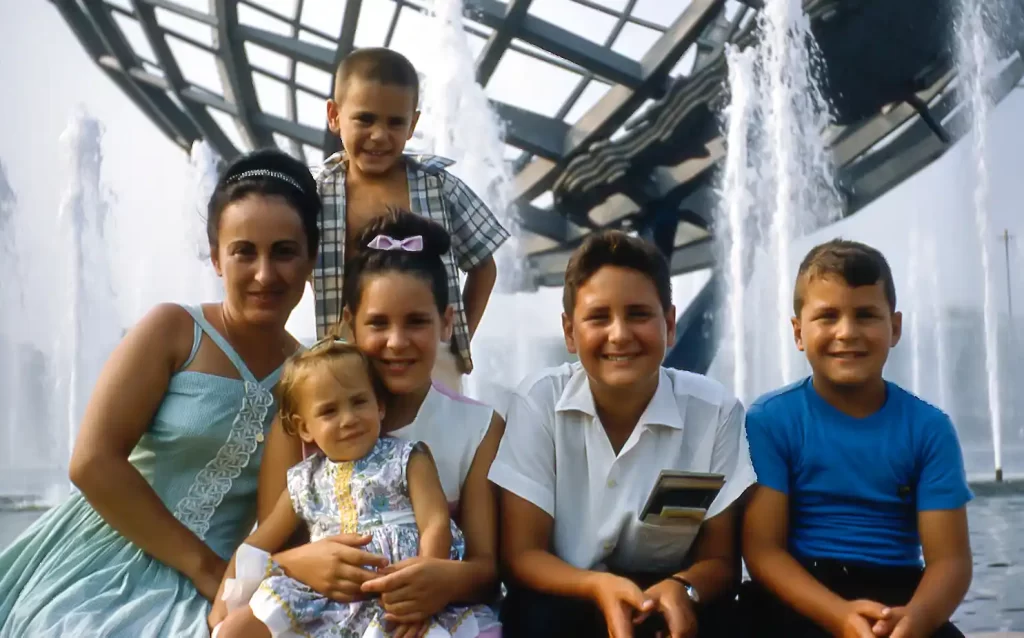
Carle Place Native: (Growing up.)
One of five siblings, Steve Vai, was born on June 6, 1960, in the Long Island Hamlet of Carle Place. He had a loving mom that gave him security and kindness and a father, who, by example, showed him the value of hard work and having a sense of humor. His father was a liquor salesman and a bartender and for a while, drifted into alcoholism until Steve was 12 years old. At that time, his father kicked the habit for good cold turkey. This would later give Vai plenty of reasons to stay away from booze and drugs as an adult.
Overall, Vai had what he called a tight-knit typical Italian Catholic family unit.
His first musical revelation came at the young age of four years old. His aunt had a piano that no one was allowed to touch. In one of his first acts of rebellion, little Stevie pushed down on the forbidden ivory keys and had a musical epiphany. At that very moment, he realized two things: When he heard music, he could kind of see it. And the creation of music was infinite — you could do whatever you wanted with it.
Discovering the first musical thing he really loved came from listening to his parent’s copy of the West Side Story original soundtrack. He loved the drama, the incredible melodies, the uncanny orchestration, and upon hearing it, he knew immediately he wanted to understand and compose music.
His mom, Theresa, took note of her son’s fascination with music by buying him a Spinet organ for his 6th birthday, and he quickly started playing melodies with his newfound passion.
Steve described the first time he played an actual song: “I walked up to my little spinet organ and played the theme song for the horror flick with Bette Davis called Hush… Hush, Sweet Charlotte. The movie scared me to death, and the melody haunted me until I plucked it out, and then I thought, ’Hmmm, that’s not so scary.’“
At around seven years old, he was given his first record, Yogi Bear and Friends, and then he made a giant leap for his second piece of vinyl by buying Frank Zappa’s Freak Out. Thirteen years later, he would be the man’s “stunt” guitarist.
The Guitar Love Affair begins:
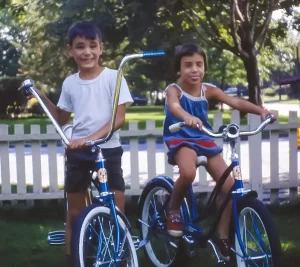
Around the age of 7, Steve’s love affair with the guitar began. He walked into his school’s auditorium and saw an older classmate on the stage playing a guitar. Young Vai was enamored but felt maybe he wasn’t “cool enough” to play such an instrument.
At age nine, Steve took another step to becoming an acclaimed musician by following in the path of many other Italian kids growing up on the east coast by taking up the accordion. Although this would be short-lived, he did connect some essential musical dots with his squeezebox. He was within a few years of knowing what instrument he was destined to conquer next.
Also at age nine, Vai formed his first band and wrote his first song; both were called “Hot Chocolate.” Vai said, “When I was nine years old, I started a little band with my younger sister Lillian who was six. I played bongos, and she played an acoustic guitar with two strings on it. We wrote our first song together. It was called ‘Hot Chocolate.’
“The lyrics went like this:
Hot Chocolate…Hot Chocolate…
Makes you quiver, makes you quake
When you drink it, drink it straight
Hot Chocolate.
“I would have to say that in my whole career, Lillian was my favorite collaborator. We had a joyous, unconditional acceptance of each other’s contributions. It’s never been quite like that again with anyone else.”
After Hot Chocolate disbanded, Vai would play the electric piano in the band Ohio Express with his good friend and guitarist Frank Strosahl.
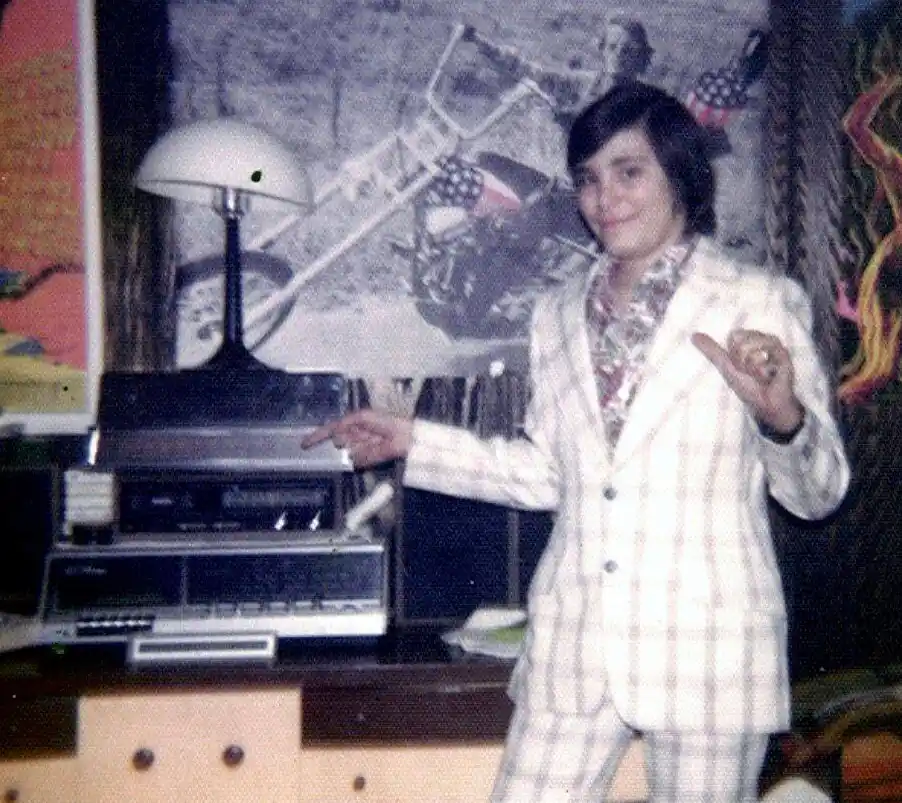
Discovering Led Zeppelin:
Although Steve was the only one in the Vai household that had a real interest in playing musical instruments, he was not the only one that liked listening to records. When Steve was 12 it was his older sister Pamela that introduced him to the tune that would crystalize his path toward the instrument he wanted to play. The band was Led Zeppelin, and the song was “Heartbreaker.” The following year Vai would see Led Zeppelin at a sold-out Madison Square Garden concert. (Thirteen short years later, Vai himself would be on the same stage in front of a sold-out David Lee Roth audience.)
His First Guitar:
At 12 he secretly bought his first guitar for $5 from a buddy, Richard Jankowski, who had it hanging on his wall and never played it. A red Teisco Del Rey with a whammy bar, a lot of switches, and 3 pick-ups. He kept it secret because he thought others would make fun of him for wanting to play. His only problem now was he had no idea how to play his new fretted purchase.
It was an afternoon in the middle of 1972, and Vai had just announced to his family, “I want to change instruments and play the guitar.” Vai’s father, Johnny, replied grumpily, “Porca miseria Stevie, you’ve got those two accordions. Your teacher says you’re doing damn good. What do you want to go to the guitar for?” But once Steve started playing the guitar his parents recognized his great interest and unconditionally supported it.
In came Vai’s childhood friend John Sergio. John was another source for his musical education by turning Steve onto bands like Jethro Tull. Emerson Lake and Palmer, Yes, etc, and taking him to a Queen concert. When Steve saw John playing the guitar, he said to him, “You must be the best guitar player in town.” To which, John replied, “If you think
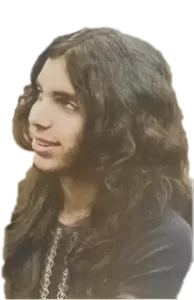
I’m good, you should see my guitar teacher Joe Satriani.” John gave Steve Joe’s number.
Meeting Joe Satriani:
Before meeting with Joe, Steve plunked around on his guitar until all the strings had broken. With Satriani’s number, Vai could now start to take lessons from a future guitar master. Since he didn’t know how to tune or string it, he had to bring a pack of guitar strings to his initial lesson. For the first month or so, Vai could not afford the $5 that Joe charged, so he split the cost with Ohio Express bandmate Frank Strosahl.
The kindling was starting to ignite, but one thing was missing — amplification. A resourceful kid, Vai figured out a way to use his sister’s stereo as his first amp. He soon blew out the speakers but noted they sounded best right before the death fizzle of the stereo’s speakers.
Steve knew from his early childhood that he wanted to do more than just play one instrument; he wanted to compose and write for the whole orchestra. He had Joe show him how to wail, but Vai needed to take what he learned from Joe and expand on it.
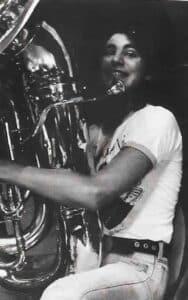
Steve Vai’s first music mentor Bill Westcott:
In the seventh grade, Vai was able to convince his school to allow him to take a high school class about music theory, taught by Bill Westcott, who was a savant genius. Steve self-admits he was average to below average in many things at school, but he soared in his music theory class. Steve said “I wanted to take the class, but the teacher thought it might be over my head. They needed a Tuba player in the grade school and high school orchestra band, so I told them that I would take up the tuba if they let me take the class. It worked. The tuba also doubled as a colossal bong for my greaser friends.”
By the time Steve was in high school, he had composed his first orchestral score, “Sweet Wind from Orange County,” and was writing new pieces of music daily in manuscript form. Mr. Westcott was not easy on young Vai because he wanted to teach him the secret language of music that would allow Steve to transcribe and write for each instrument in the band, not just the guitar. Bill Westcott’s music theory class was what everything else that came after was built on, the foundation of Vai’s musical vernacular. “There was no greater musical influence in my life,” Steve Vai said of Westcott.
During high school, Steve would practice 9-15 hours a day with his guitar. During this time, his parents continued to show their support for their son’s playing. When the neighbors complained about the loud guitar, Steve remembered that his dad proudly told them, “Shut your ass. That’s my son up there playing the guitar.”
“And then my teachers would get upset when I’d bring a guitar to school,” Vai recalled. “They’d call my parents, and my father would say, ‘My son will bring his guitar wherever he wants.’”
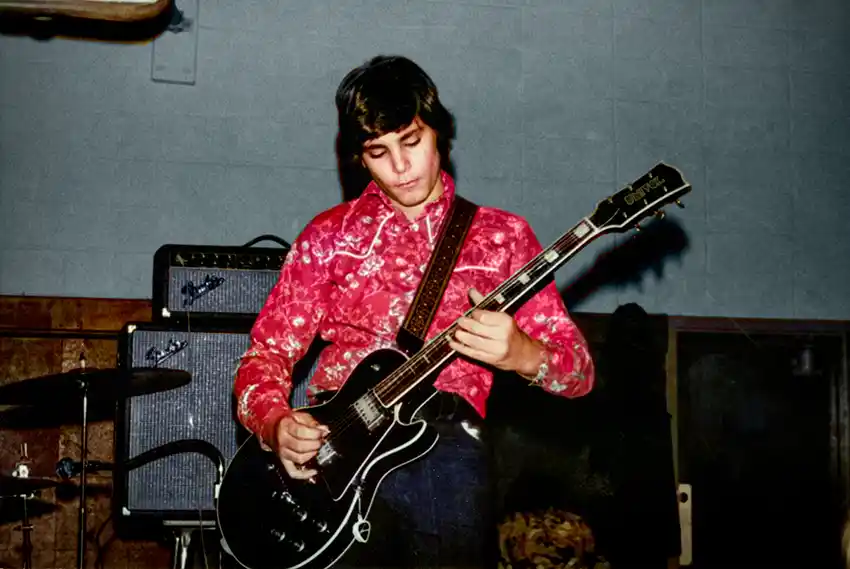
High School bands:
On weekends and summers, Steve started to play in bands. After his keyboard-only stint with Ohio Express, around the age of 13, he joined up with bass player John Sergio and his band Circus. This would be the band where he first got the taste of playing in front of live audiences. This love of playing live and touring would stay with him.
Around 14-15, he joined a more rock-oriented band named Rayge. (This would be his last band until he went off to college.) He loved everything about it, hanging with his friends, girls, getting in trouble, all that goes into solid typical teenage years. Steve was having a blast, but he knew he had to continue his musical studies post-high school. He wasn’t thinking about fame and fortune. At the time, he was daydreaming about being a music teacher like Mr. Westcott, or maybe scoring films, and he thought that would be a good life for himself. But regardless, he had to push to that next level in his musical journey by attending one of the most prestigious music schools in the world, Berklee College of Music. His dad showed his support by selling his life insurance policy to help pay for Vai’s next round of education.
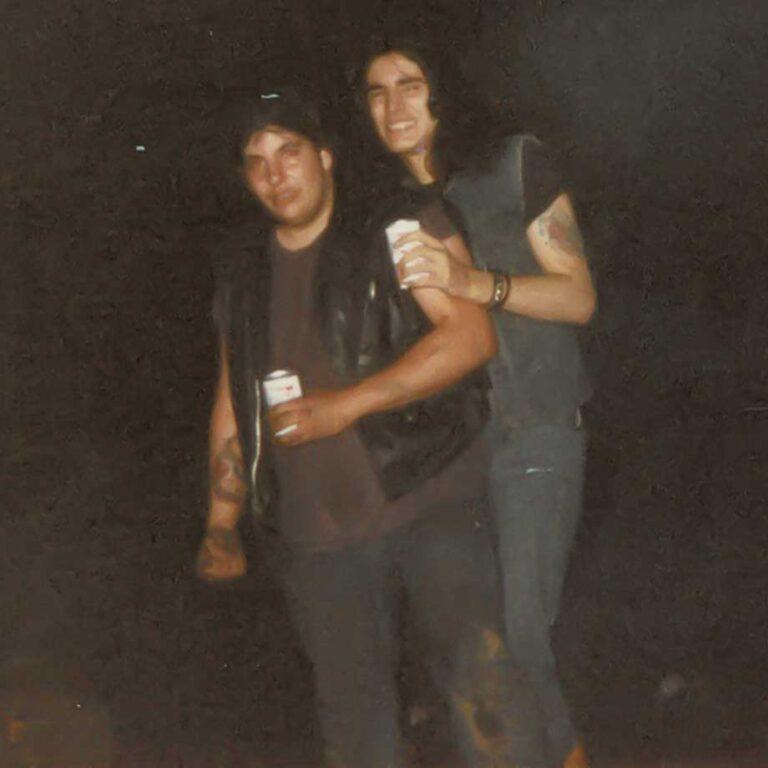
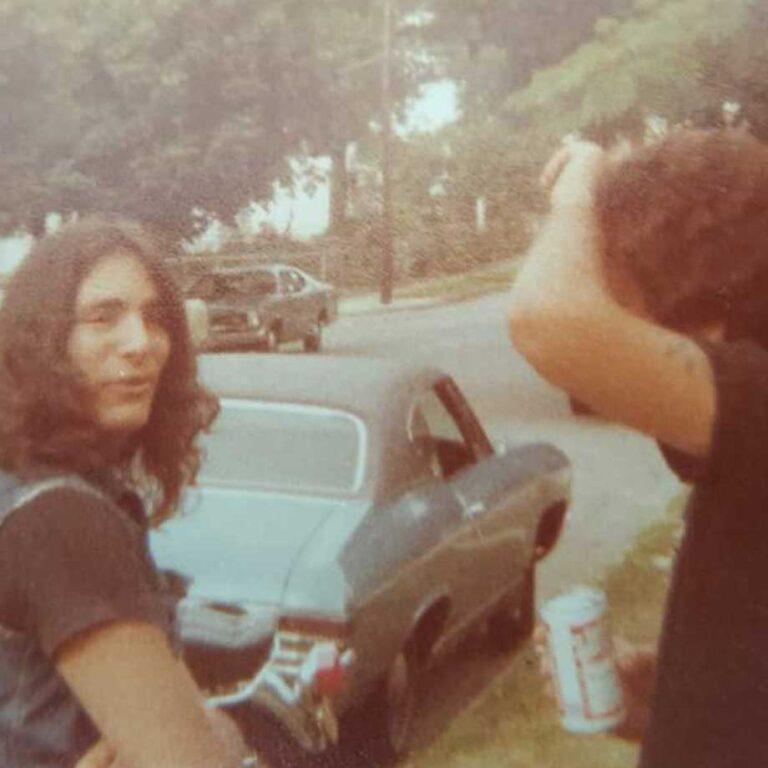
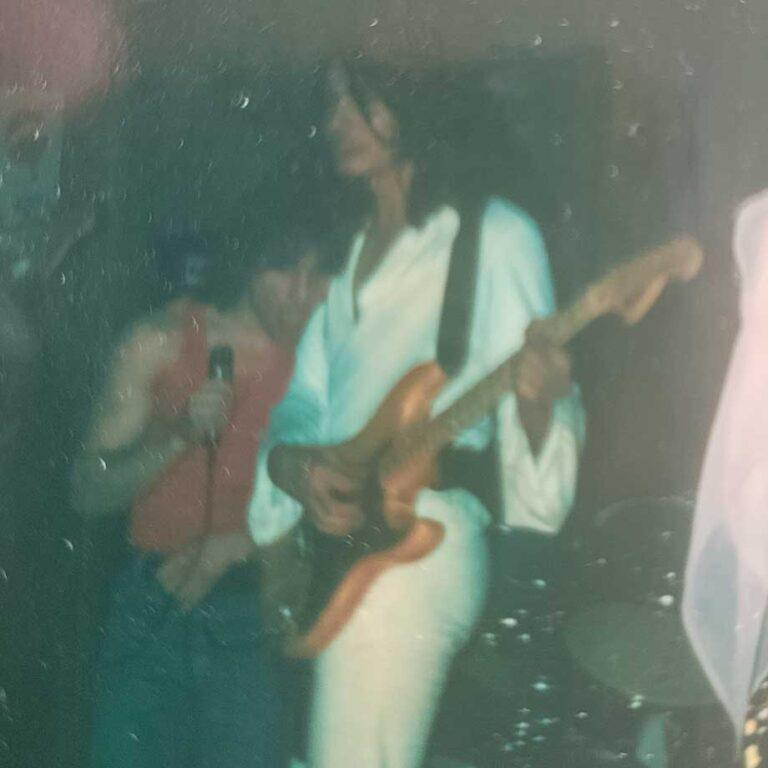
One Last Blow-out:
One night before leaving for Berklee, Vai wanted to have one last blowout with his buddies, including one of his best friends Joe Despagni. That summer Vai had taken his first and only real job, besides a paper route, driving a Dolly Madison ice cream truck. (He loved the job.) As on several occasions before, Steve would use the truck’s freezers to keep his and his friends’ beers ice cold.
“The last night that I had the ice cream truck we were at a party at this very, very rich girl’s mansion (her parents’ mansion, actually) in Old Westbury. I had my ice cream truck parked in the backyard. So I’m at this party, and… the place gets raided by the cops.”
When Vai tried to nonchalantly drive out of the yard and away from the bust, he was stopped by a confused police officer. “I stopped the truck, opened the little serving window and said, ‘Can I help you?’ as I would to any customer. With a disbelieving look on his face, he said ‘What is an ice cream truck doing… forget it. Get out of here.’”
Good fortune had smiled upon him, something he might have to pay for later.
Later that night, around 4:00 am, Vai and his buddy Joe Despagni finished up the evening at Steve’s house with a ritual: the DIY tuna melt.
“Oh God,” Vai recalled. “Would we pig out on some outrageous concoctions? Try tuna fish with a ton of mayonnaise and mustard, splattered on some Italian bread, covered with a pound of Velveeta cheese and bologna. Bake to a golden crunch and devour before bedtime. Oh, it was good. We savored every last morsel as if it was God’s reward to us for having such a righteous time and escaping the police unscathed. But then again, in the condition we were in, we could have eaten broken glass and enjoyed it.”
But by the next morning, the worm had turned. As Vai recalled, “I woke in the morning feeling awful. I mean, wow. You know the feeling when your brain feels like wet bread? I crawled out of bed at 8:00 am because I had to return the ice cream truck that day. I was sitting in the kitchen, and my dear old beautiful Mom says, ‘If you’d like me to make you some lunch later, Steve, there’s one can of tuna left.’ Hmm. ‘Sorry, Mom. Joe and I ate it last night,’ I replied. ‘You couldn’t have, dear. There was only one can left, and it’s still there,’ she called upstairs. I walked over to the cabinet and opened it. There was the lonely little can of tuna sitting on the shelf. If this was the only can, I pondered, then what did Joe and I eat last night?
“It was at this precise moment that my eyes spied the trash can to find an empty cat food tin staring back at me.”
Immediately, Vai raced to the refrigerator, hoping he could chug something down to keep his stomach in place. Miraculously, there was a full jug of his Mom’s iced tea, well known among Vai’s friends as a cure-all for hangovers. Or so he thought.
“Now, I believe it was the very second that it hit my mouth that I realized it wasn’t Mom’s special iced tea at all. The phlegm-like texture sloshed down my throat and thudded in my stomach before I could even pull the bottle away from my mouth. That’s when I noticed, much to my chagrin, that I’d just taken a monster swig of pure cooking grease.”
Things devolved significantly from there. After innumerable abominations in the bathroom, Vai miserably realized he still had to return the ice cream truck (he’d be leaving for Berklee the next day), and though he left the house “feeling so sick I couldn’t even hear,” he decided to take one last nostalgic tour of the town in his beloved truck… until he tore out the roof of the Dairy Barn’s drive-thru as he attempted to show off his truck one last time to a friend who worked there.
He called Joe for help. Joe hung up, but after further calls and persuasion, his buddy — also hungover — came down to sort out the broken glass, the destroyed drive-thru roof, and the truck wedged under it all. What a memorable last day at home and the end of Vai’s childhood years.
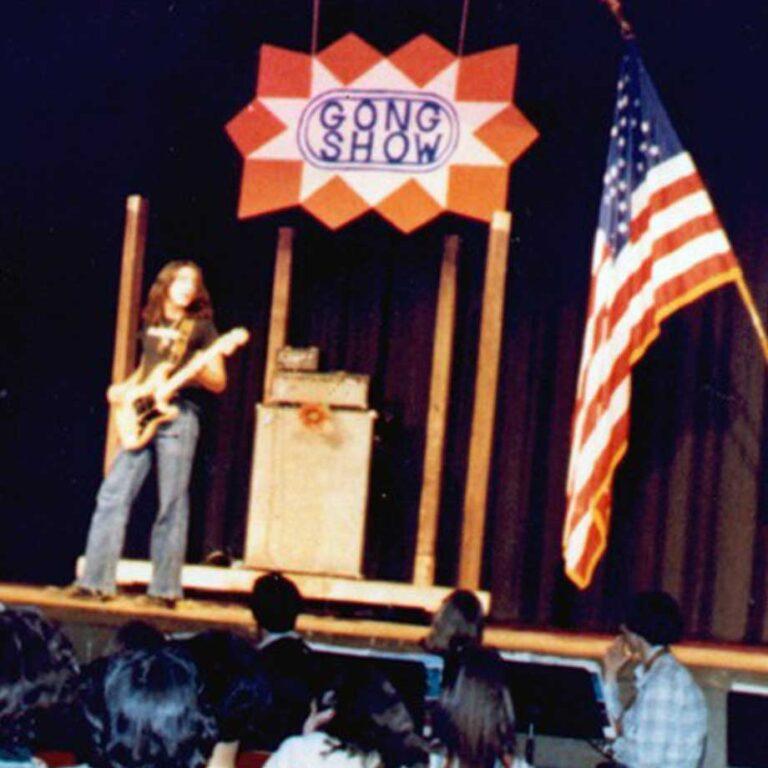
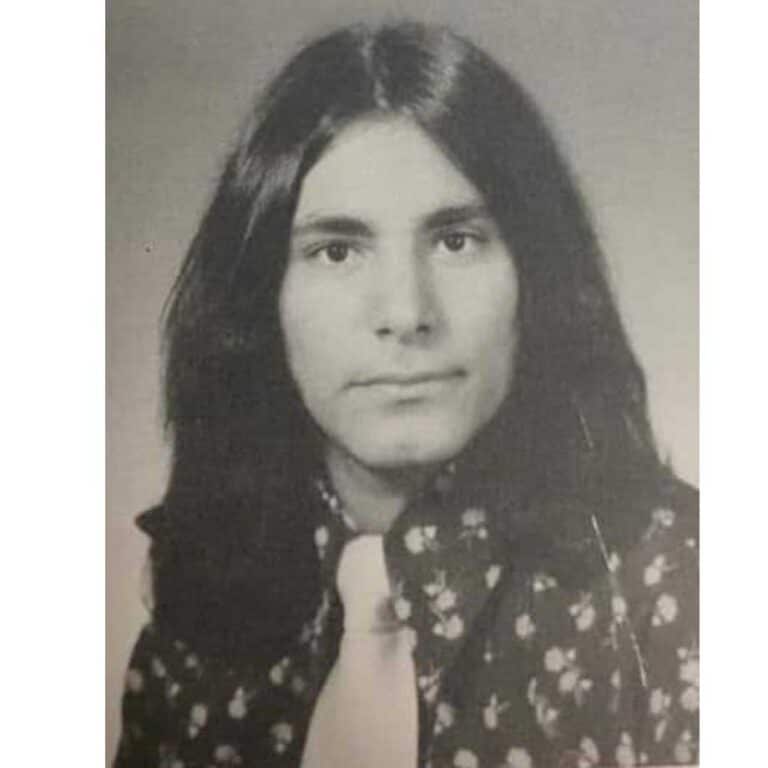
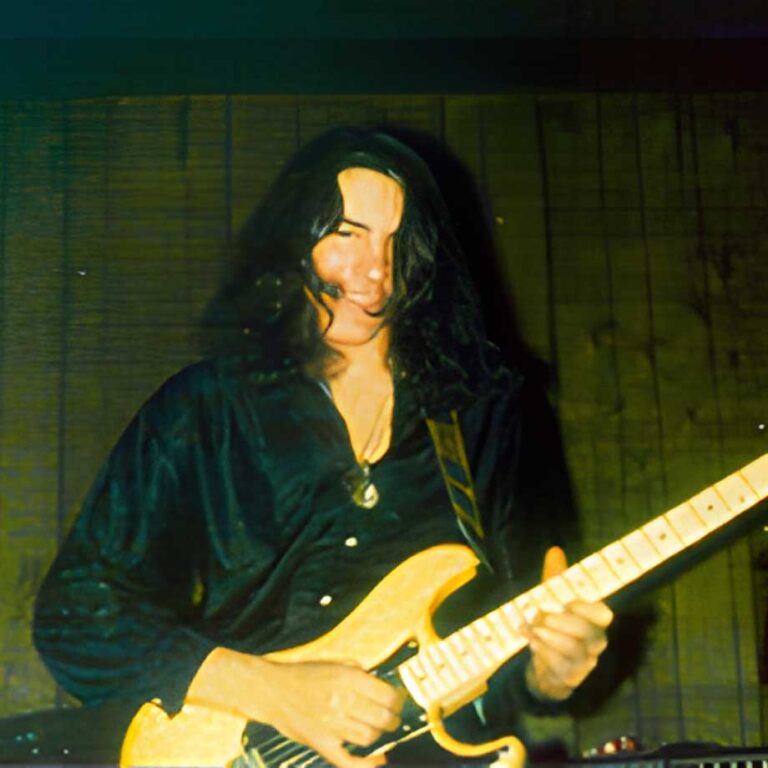
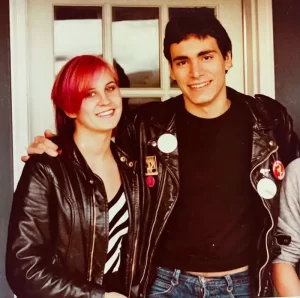
Berklee College of Music:
In the fall of 1978, Vai attended Berklee College of Music in Boston, where he lived in borderline poverty. He would only have one light on at a time in his small apartment. He said the “rats were big enough you could wrestle them.” Steve and his roommate were so broke during this time that his roommate, who worked at a delicatessen around the corner from their apartment, would open the back door of the establishment and sneak out blocks of cheese for Steve to come and secretly pick up. On the way home, he would stop at Mcdonald’s to pocket some small packets of ketchup and when his friend would return home after work, they would feast on cheese and ketchup.
Despite being broke, he loved going to Berklee. There was always someone to jam with, and Vai credited the school as the place where the world of music opened up to him, saying, “The best music education I got was at the school’s listening library, where they had every kind of music available. Being exposed to different kinds of music was a big contributor to my musical awakening.”
While at Berklee, Vai met classmate Pia Maiocco. (Later to play bass in the all-female metal band Vixen.) The two fell in love and would eventually marry in 1988.
Vai would form two bands while at Berklee. In the first group, Axis, he wrote some of the music that would end up on his solo album Flex-Able a few years later. But it was the demo tape from his second band, Morning Thunder, that would be one of the first things that got Frank Zappa’s attention.